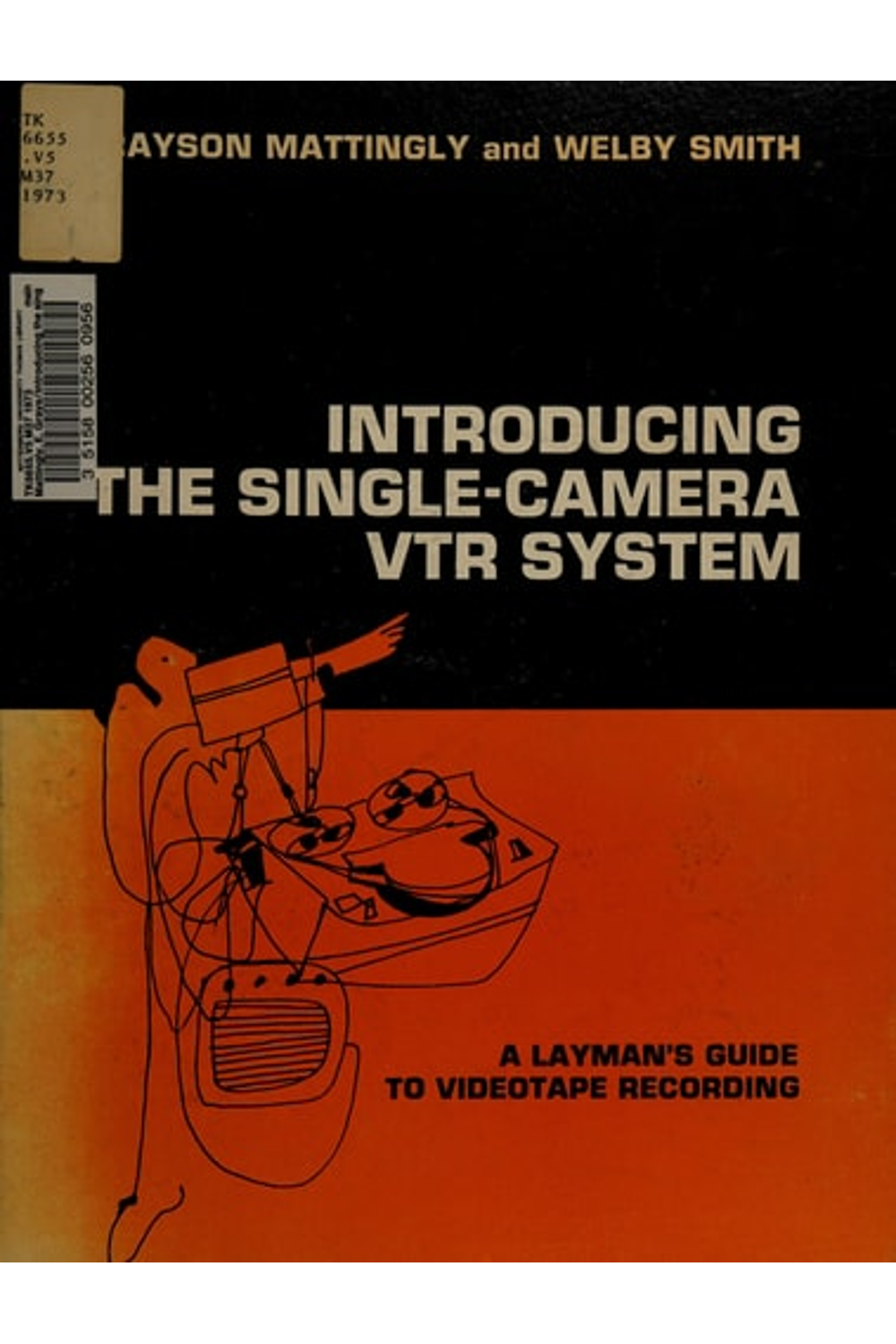“Introducing the Single-Camera VTR System: A Layman’s Guide to Videotape Recording” by E. Grayson Mattingly, published in 1973 by Scribner, offers a rare peek into the foundational era of video production. This book, ISBN 9780684132327, serves as an accessible primer on single-camera Videotape Recorder (VTR) technology, vital for understanding the roots of modern filmmaking and broadcasting. Mattingly expertly demystifies complex concepts, making this 130-page guide an invaluable resource for film students, media historians, and vintage technology enthusiasts. Discover the core techniques and equipment that shaped early video creation. This particular copy, withdrawn from a library, carries the marks of its service, including library binding, stamps, and stickers authenticating its historical journey. While a dust jacket may not be included, the book’s content remains a treasure trove of information on analog video’s early days. Weighing approximately 726 grams, this unique piece of media history provides context to the incredible progress in video recording. This book is relevant to Dewey Decimal 778.59.
Introducing the single-camera VTR system;: A layman’s guide to videotape recording
13,42 $
In stock
Description
Book is used and has been withdrawn from service from a Library. Book has a Library Binding and the usual Library Stamps, Stickers, Card Holder, Library Markings. May or May Not have a Dust Jacket.
Uncover the fascinating world of early videotape recording with "Introducing the Single-Camera VTR System: A Layman's Guide to Videotape Recording" by E. Grayson Mattingly. Published in 1973 by Scribner, this book offers a unique glimpse into the technology and techniques of single-camera video production during a pivotal era in media history. This book serves as an accessible entry point for anyone curious about the origins of video recording. Mattingly expertly guides readers through the intricacies of the single-camera VTR (Videotape Recorder) system, breaking down complex concepts into understandable terms for the layman. Whether you're a film student, a vintage technology enthusiast, or simply interested in the evolution of video production, this book provides valuable insights. Delve into the practical aspects of operating and utilizing a single-camera VTR system. Explore the different components, learn about recording techniques, and understand the workflow involved in creating video content during this technological period. While digital video is ubiquitous today, this book provides a much needed context to how far we have come, and how the roots of many modern workflows and techniques can be seen in this older technology. This specific copy bears the marks of its past life as a library book. Expect library binding, stamps, stickers, cardholder remnants, and other library markings, adding to its historical character and authenticity. Note that a dust jacket may or may not be present. Though used and withdrawn from library service, this book remains a valuable resource for understanding the fundamentals of early videotape technology. Despite being over 50 years old, "Introducing the Single-Camera VTR System" remains relevant due to its historical significance and the clear, accessible way Mattingly explains complex concepts. It offers a tangible connection to the past, allowing readers to appreciate the ingenuity and innovation that paved the way for the digital video revolution we experience today. This is more than just a technical manual; it's a piece of media history ready to be explored.
Additional information
| Authors | |
|---|---|
| Binding | |
| Condition | |
| ISBN-10 | 068413232X |
| ISBN-13 | 9780684132327 |
| Language | |
| Pages | 130 |
| Publisher | |
| Year published | |
| Weight | 726 |
| Dewey decimal | 778.59 |
SKU: G-9780684132327-5
Category: VIDEO RECORDING
- Additional information
- Currencies
- USD – United States dollar
- EUR – Euro
- GBP – Pound sterling
- CNY – Chinese yuan
- BRL – Brazilian real
- MXN – Mexican peso
- JPY – Japanese yen
- PHP – Philippine peso
- THB – Thai baht
- PLN – Polish złoty
- CAD – Canadian dollar
- MYR – Malaysian ringgit
- AUD – Australian dollar
- TWD – New Taiwan dollar
- CZK – Czech koruna
- SEK – Swedish krona
- HUF – Hungarian forint
- ILS – Israeli new shekel
- CHF – Swiss franc
- HKD – Hong Kong dollar
- DKK – Danish krone
- SGD – Singapore dollar
- NOK – Norwegian krone
- NZD – New Zealand dollar

